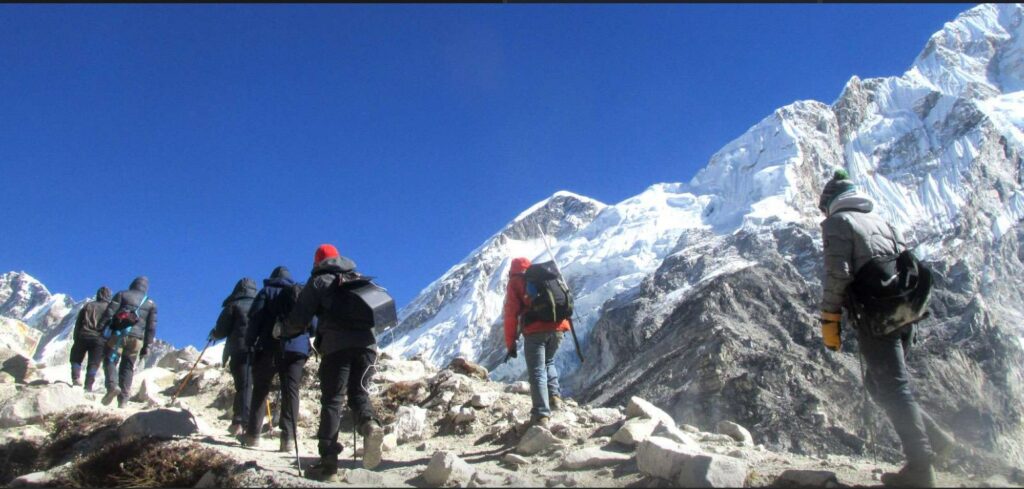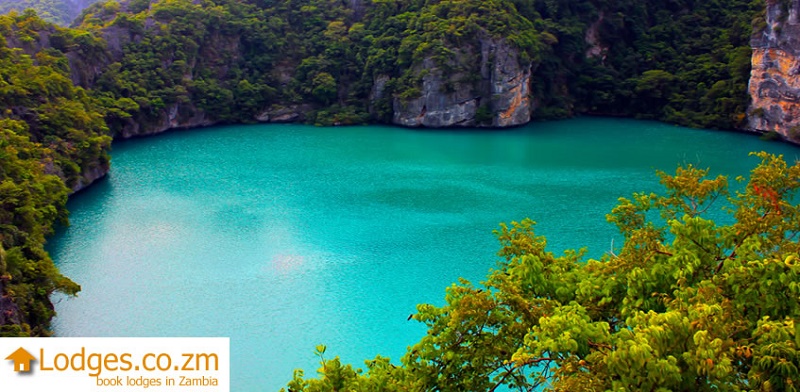Trekking to Everest Base Camp is an incredible experience, but the journey comes with its challenges, the most significant being altitude sickness. As you ascend to high altitudes, your body needs to adapt to the lower oxygen levels. In this guide, we’ll break down what altitude sickness is, its symptoms, and how to manage and prevent it during your 14-day Everest Base Camp trek.
What Is Altitude Sickness?
Altitude sickness, or acute mountain sickness (AMS), occurs when you ascend to higher altitudes faster than your body can acclimatize. The reduced oxygen at higher elevations makes it harder for your body to function normally.
The Everest Base Camp trek reaches an altitude of 5,364 meters (17,598 feet), which is high enough for most trekkers to feel the effects of altitude. Although AMS can affect anyone, no matter how fit or experienced, understanding its symptoms and prevention strategies is crucial for a successful trek.
Symptoms of Altitude Sickness
Altitude sickness can range from mild to severe, with symptoms manifesting quickly, sometimes within hours of reaching a higher altitude. Below are common symptoms you might encounter:
- Mild Symptoms: Headache, dizziness, fatigue, shortness of breath, nausea, and trouble sleeping.
- Moderate Symptoms: Intense headache, vomiting, confusion, and difficulty with coordination.
- Severe Symptoms: These include High Altitude Pulmonary Edema (HAPE) and High Altitude Cerebral Edema (HACE), both of which are life-threatening conditions. Symptoms of HAPE include fluid in the lungs, persistent cough, and difficulty breathing even while resting. HACE is characterized by confusion, loss of consciousness, and the inability to walk.
If severe symptoms develop, immediate descent is the only option.
Altitude Profile of the Everest Base Camp Trek
The Everest Base Camp trek involves a gradual ascent that allows your body to adjust to the changing altitude. The trek typically spans 14 days, giving your body time to acclimatize at various points along the route.
Here’s a brief breakdown of the altitude profile:
- Lukla (2,860m/9,383ft): The trek begins with your arrival in Lukla. You’ll spend the first few days trekking through villages at altitudes between 2,600m and 3,800m.
- Namche Bazaar (3,440m/11,286ft): This Sherpa town is where you’ll spend two days to acclimatize. While staying here, take short hikes to adjust to the thinner air.
- Tengboche (3,867m/12,687ft): The next few days will take you higher, with rest stops in villages like Tengboche and Dingboche (4,360m/14,305ft).
- Lobuche (4,940m/16,207ft): At this point, you’ll likely feel the effects of altitude more significantly. It’s crucial to pace yourself and drink plenty of water.
- Everest Base Camp (5,364m/17,598ft): The ultimate goal, where altitude sickness becomes a greater risk due to the high elevation.
By understanding these altitude changes, you can better prepare your body for the trek.
Preventing Altitude Sickness on the Everest Base Camp Trek
While altitude sickness can’t always be prevented, there are several precautions you can take to minimize the risk.
1. Acclimatization
The 14-day Everest Base Camp trek includes acclimatization days, typically in Namche Bazaar and Dingboche. These days are critical, as they allow your body to adjust to the increasing altitude. During acclimatization days, take short hikes to higher altitudes before descending to sleep at a lower elevation. This practice, known as “climb high, sleep low,” helps your body adapt to the altitude more effectively.
2. Hydration
Staying well-hydrated is essential. Drinking at least 3 to 4 liters of water daily helps your body cope with the reduced oxygen levels. However, avoid alcohol and caffeine, as these can dehydrate your body and worsen the symptoms of altitude sickness.
3. Slow and Steady Pace
One of the biggest mistakes trekkers make is rushing to higher altitudes. On the Everest Base Camp trek, it’s important to maintain a slow and steady pace. Even if you’re feeling strong, pushing yourself too hard can increase the risk of altitude sickness.
4. Medications
There are several medications available that can help prevent altitude sickness, such as Diamox (acetazolamide). Consult with your doctor before the trek to see if medication is appropriate for you. Additionally, carrying oxygen canisters or portable oxygen masks is a good idea for emergencies.
5. Proper Nutrition
Maintaining a balanced diet is vital for trekking at high altitudes. Carbohydrates are your best friend here, as they provide quick energy to your body. Eating hearty meals such as dal bhat, which is high in carbohydrates and protein, can help keep your energy levels up. Make sure to snack regularly to prevent fatigue.
Dealing with Altitude Sickness on the Trek
If you begin to experience symptoms of altitude sickness, it’s important to take immediate action.
1. Rest and Hydrate
At the first sign of symptoms, rest and drink plenty of fluids. Don’t push yourself to keep trekking. Listen to your body and allow it to recover.
2. Descend If Necessary
If symptoms worsen or do not improve, descending to a lower altitude is the only solution. Even a drop of a few hundred meters can make a significant difference in alleviating symptoms. Never attempt to continue the trek if severe altitude sickness sets in.
3. Use Oxygen
If you’re experiencing moderate to severe symptoms and descent is not possible immediately, use supplemental oxygen to stabilize your condition until help arrives.
4. Avoid Overexertion
Trekking at high altitudes requires more energy, so avoid overexerting yourself. Take frequent breaks and never skip the acclimatization days.
Everest Base Camp Trek with Helicopter Return
For those seeking an alternative to the traditional 14-day Everest Base Camp trek, consider the Everest Base Camp Trek with Helicopter Return. This option provides the thrill of trekking to Base Camp while offering a more convenient return journey. A helicopter ride not only provides a quicker descent but also an exhilarating view of the Himalayas from above, reducing your exposure to high altitudes for prolonged periods.
Conclusion
Trekking to Everest Base Camp is a once-in-a-lifetime adventure, but altitude sickness is a serious concern. By taking precautions like acclimatizing properly, maintaining hydration, and pacing yourself, you can significantly reduce the risk of altitude sickness. Should symptoms occur, it’s essential to act swiftly by resting, descending if necessary, or using oxygen.
If you’re looking for a guided trek that prioritizes safety and provides the best possible experience, Boundless Adventure offers expertly led treks with experienced guides who know the risks of altitude sickness and how to manage them. Whether you’re aiming for the traditional 14-day Everest Base Camp trek or the Everest Base Camp Trek with Helicopter Return, Boundless Adventure ensures a safe, enjoyable, and unforgettable journey.
By understanding and preparing for altitude sickness, you can embark on your Everest adventure with confidence, knowing you’re equipped to handle the challenges that come with high-altitude trekking. Happy trekking!
Recommended Read: https://articleusa.com/cultural-experiences-along-the-everest-base-camp-trek/




